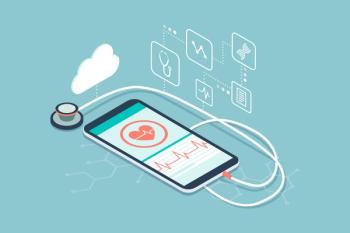
- Drug Topics September 2021
- Volume 165
- Issue 9
Build a Successful Hospital Pharmacy Analytics Program
Leverage internal partnerships and demonstrate the value of data
A robust hospital pharmacy analytics program can improve drug utilization and advance patient care delivery. In a webinar by Becton Dickinson held on June 16, 2021, pharmacy leaders discussed the critical elements of high-performing pharmacy analytics programs and how hospital pharmacy departments can grow them to drive operational, clinical, and financial decisions.
Joe Lassiter, PharmD, MS, president of The Robertson Group, LLC, based in Portland, Oregon, kicked off the presentation by underscoring the need for pharmacy analytics. “In 2019, [the American Society of Health-System Pharmacists] launched the Practice Advancement Initiative, or PAI, 2030 as a continuation of [its] Practice Model Initiative to guide and ensure that practitioners and leaders [‘meet the demands of future practice and patient care delivery models’],” Lassiter explained.
Technology and data science are among the 5 domains from those recommendations, with several suggestions that propose applications of pharmacy analytics in practice and speak to the need for having a workforce fluent in informatics and analytics, according to Lassiter. However, despite the importance of well-developed pharmacy analytics programs, starting the process can be daunting, especially for departments with limited resources.
Getting Started
During the webinar panel discussion, pharmacy leaders emphasized the importance of getting started, no matter where you are in the process. “[Three years ago] we really were stone and chisel for how we did our analytics…We barely could get to our data,” said Chad Hatfield, PharmD, MHA, BCPS, chief pharmacy officer, UC Davis Medical Center, Sacramento, California. “[We] went from those caveman days to a rocket ship that’s trying to put somebody now onto Mars.”
According to Hatfield, the analytics program at UC Davis started from a partnership with the information technology (IT) team infrastructure outside of the pharmacy. The program was built on the backbone of the health system using the existing commercial data visualization tool, Tableau. Leveraging existing third-party solutions such as this can be a beneficial strategy when starting out.
“I recommend you pay close attention to where your organization is investing its dollars in regard to these applications and align accordingly,” Lassiter said. He added that pharmacies can use a blended approach of the following options to help get their pharmacy analytics off the ground:
- Third-party solutions
- Vendor partnerships
- Regional collaboration
- In-house personnel with specialized skill sets
Jeffrey Chalmers, PharmD, senior director of pharmacy informatics and technology at Cleveland Clinic in Ohio, said his pharmacy department shifted toward a pharmacy analytics program after implementing a more modern electronic medical record platform. “Over the years, requests [for data] became more complex,” he said. The implementation of his organization’s specialty pharmacy also fueled the need for a more robust program when it realized the need for data from multiple sources, to “be able to manipulate that data in different ways.”
Launching the program is a challenge but gaining the additional resources to grow the program can be another hurdle. Developing dedicated staff, whether in-house experts or recruited resources, can help advance the process.
Growing Your Program
All the webinar panelists agreed that partnerships with necessary stakeholders were vital in supporting the growth of their pharmacy analytics programs and teams. “We heavily engaged our enterprise business intelligence institute,” Chalmers said. “They have a lot of programmers [and] data scientists on their team. [We] started by meeting with those groups to understand what types of skills we would need.”
Hatfield said internal discussions with financial stakeholders, such as the chief financial officer and the IT team, were crucial for communicating the program’s needs. Chalmers recommended highlighting opportunities for cost savings with drug utilization to gain buy-in.
“We were able to leverage data to increase efficiency and utilize drugs more appropriately and display cost savings,” he said. “We continued to use that to gain more momentum to ultimately get approval for additional resources.” Chalmers relayed how, during the COVID-19 pandemic, the analytics team built a medication inventory dashboard that allows near–real-time monitoring of inventory levels for hard-to-acquire medications. Identifying opportunities early to showcase successful projects to leadership teams in the organizations helped build support for the program’s growth, Chalmers explained.
Demonstrating Value
Proposing and justifying a pharmacy analytics program to the C-suite team may require demonstrating value and addressing return-on-investment questions. Chalmers and Hatfield agreed that focusing on revenue and cost containment is especially crucial to justifying the program’s significance.
Chalmers explained that, at Cleveland Clinic, much time was spent trying to increase the capture rates of physicians prescribing to the organization’s ambulatory pharmacies. “We have 26 pharmacies across northeast Ohio but only capture about 11% of prescriptions that are prescribed by Cleveland Clinic doctors,” he said. Chalmers added that, by doing basic analytics, it was determined that every 1% increase in capture rate translated to approximately $1 million annually in net profit.
“Well, that catches a lot of people’s attention,” he said. Next, a dashboard was created to display capture rates based on the clinic, institute, and specialty, which allowed the team to identify areas with high and low performances.
According to Hatfield, gaining that initial trust from the executive team and then having the ability to report back the data are essential. “When I told you that I could save $10 million off inpatient drug spend, and then I came back and we did $12 [million] last year, and we did it because we had these [individuals] in place, that was really more telling for us to help us continue to move forward with our program,” he said.
Building Relationships for Success
One of the key issues in proposing a pharmacy analytics program is determining the organizational structure. Programs can be based in pharmacy, IT, or shared between the 2 departments. “Our entire informatics programming, including our reporting and analytics teams, report up through me, and I report through the chief pharmacy officer, but not everybody has that structure,” Chalmers said.
However, he emphasized that the most important aspect is not who you report to but the relationships between the responsible parties and the pharmacy department. For example, his reporting and analytics teams sit in weekly pharmacy operations meetings and regularly meet with the clinical team and residents. “I don’t think that it matters if they report up to pharmacy or IT, as long as that dynamic exists,” Chalmers said.
Lassiter agreed that these relationships are key because the exact structure of the program will be unique to each organization. “The organizational nuances are too specific to be able to have just 1 template,” he said. He noted that successful programs could have an IT director with dual reporting roles to the pharmacy and IT departments or a pharmacist sitting on an enterprise analytics team. Regardless of the reporting structure, what matters most is the connection with pharmacy, he said.
The Future of Pharmacy Analytics
As pharmacy teams grow their analytics, Lassiter noted that having a strong program does not have to mean “death by dashboard.” To prioritize efficiency and reduce information overload, Lassiter recommended ensuring that everyone in the organization is focused by asking specific questions such as, “What are the problems we’re trying to solve? What are we going to look at? How do we measure it, and how do we visualize that?” Chalmers agreed, noting that dashboards are not going away anytime soon; it’s a matter of advancing them to run more efficiently so they can perform multiple functions.
On the future of data, Hatfield and Chalmers both pointed to the movement toward predictive analytics. Hatfield added that some of those tools exist now, but it’s ultimately moving toward using them on a grander scale to add a predictive element to their reporting.
Chalmers reflected on his team’s inventory experience amid the COVID-19 pandemic as an example of the benefits of predictive analytics. “Inventory, in general, is something that I think lends itself well to a predictive type of tool, because we can see trends over time, things that change season to season,” he said. As data and analytics reporting evolve, pharmacy teams will be able to better predict and prepare for what is ahead, ultimately resulting in cost savings and enhanced patient care.
Reference
- Kvancz D, Lassiter J, Romero G, Chalmers J, Hatfield C. Analytics – the key to high performing pharmacy programs. Becton Dickinson webinar. June 16, 2021. Accessed June 16, 2021.
https://go.bd.com/analytics_key_high_performing_pharmacy_programs.html
Articles in this issue
over 4 years ago
Acne Treatment Meets End Points in Studyover 4 years ago
Selling CBD in the Pharmacyover 4 years ago
Why Pharmacists Are Stressed Out, and How to Improve Self-careover 4 years ago
Getting Patients Immunized Against Pneumonia Is Importantover 4 years ago
CBD Legislation Remains in Limboover 4 years ago
Boosting Confidence in CBD Counselingover 4 years ago
Artificial Intelligence Has Come in Wavesover 4 years ago
Ovarian Cancer Treatment Update and Pharmacists' Roleover 4 years ago
Biden Pushes for Lower Drug Prices in an Executive OrderNewsletter
Pharmacy practice is always changing. Stay ahead of the curve with the Drug Topics newsletter and get the latest drug information, industry trends, and patient care tips.















































































































